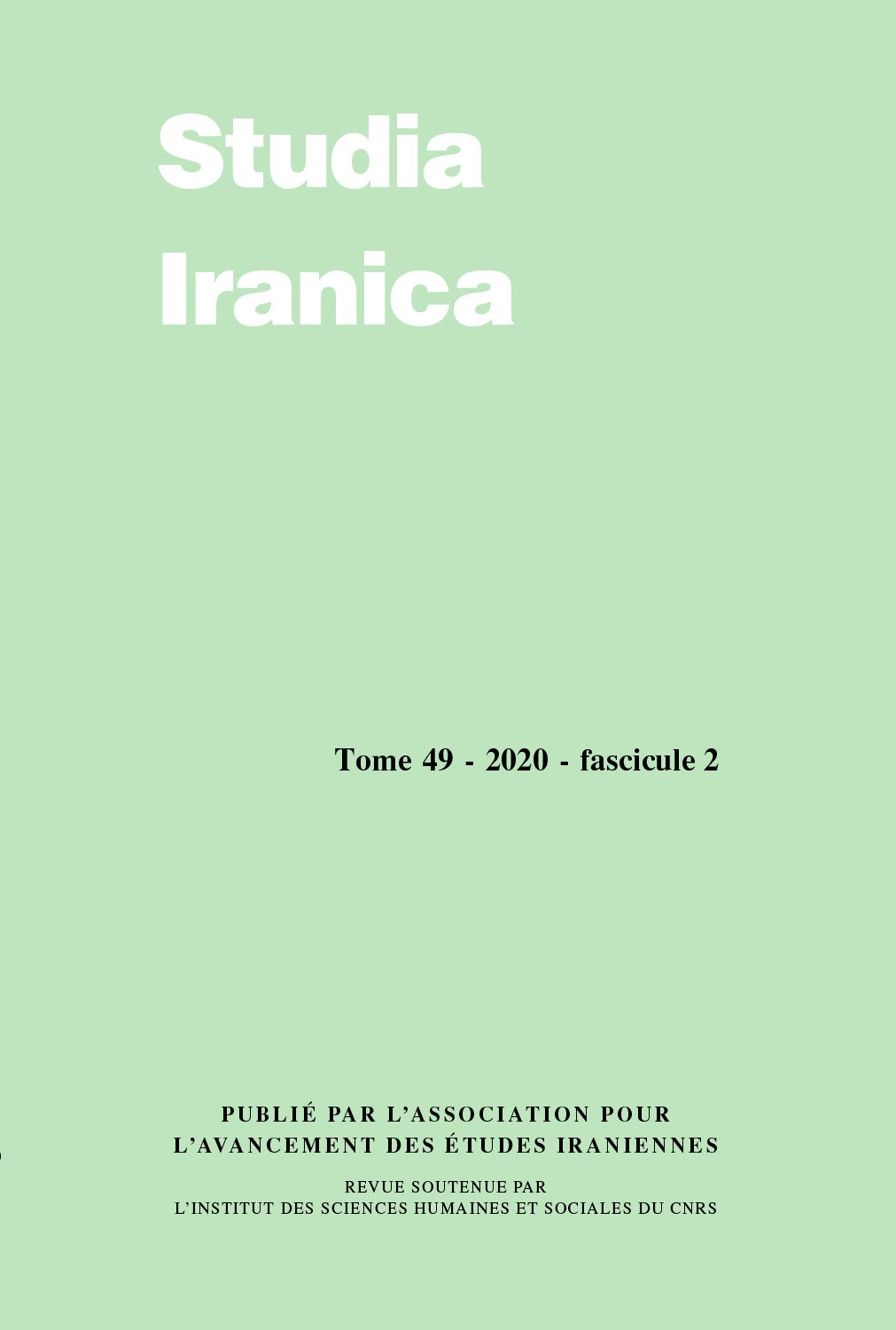 previous article in this issue previous article in this issue | next article in this issue  |

Preview first page |
Document Details : Title: A Pamir Cereal Name in Medieval Greek Sources Author(s): WITCZAK, Krzysztof Tomasz , NOVÁK, L'ubomír Journal: Studia Iranica Volume: 45 Issue: 1 Date: 2016 Pages: 53-64 DOI: 10.2143/SI.45.1.3170063 Abstract : The Northern Pamir area differs from all the remaining Iranian languages in fact that Iranian velars *k, *g, *x were palatalized to *ḱ, *ǵ (*ɣ), *x́, later to Shughni-Roshani č, ž, š, in the position before *a or *ā. The chronology of the process is unknown. According to the present authors, the Pamir (Early Shughni-Roshani) cereal name *ǰæwærs (τζαβάρς) ‘Indic millet, Panicum miliaceum L.’ (< Iranian *gawarśa-) is attested as early as in a 15th-century document written in Medieval Greek: τζαβάρς ισχχιντί · κέχρος ἰνδικός (Parisinus Graecus 2419, 31.4). The gloss in question clearly demonstrates that the so-called 'Pamir palatalization' was completed by the 15th century AD. Dans le monde iranien, la zone des langues du Pamir Nord se distingue par le fait que les phonèmes iraniens *k, *g, *x subissent la palatalisation en *ḱ, *ǵ, *x́ (> Shughni-Roshani č, ž, š) dans la position devant *a et *ā. La chronologie de ce processus reste inconnue. D’après les auteurs, le nom pamirien du blé *ǰæwærs (τζαβάρς) qui signifie ‘millet indien, Panicum miliaceum L.’ (< iranien *gawarśa-) a été noté dans le document grec du XVe siècle: τζαβάρς ισχχιντί · κέχρος ἰνδικός (Parisinus Graecus 2419, 31.4). Cette remarque textuelle montre que la soi-disante «palatalisation pamirienne» a été effectuée avant le XVe siècle de notre ère. |
|


